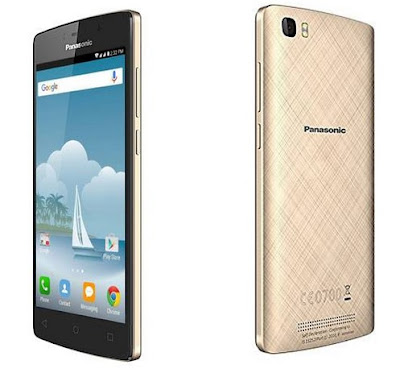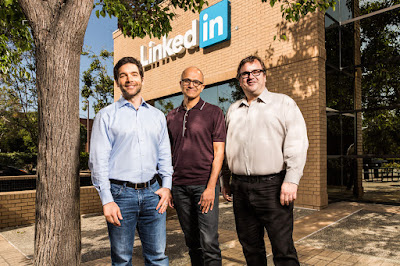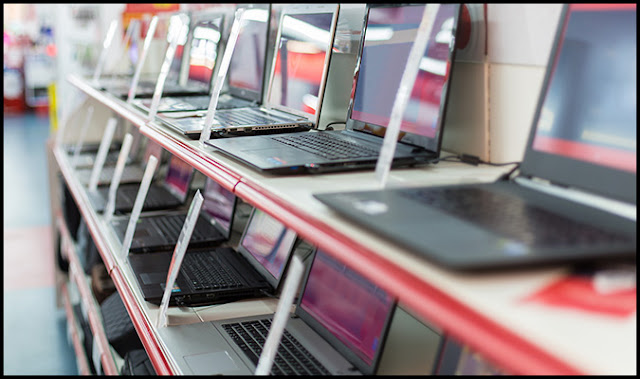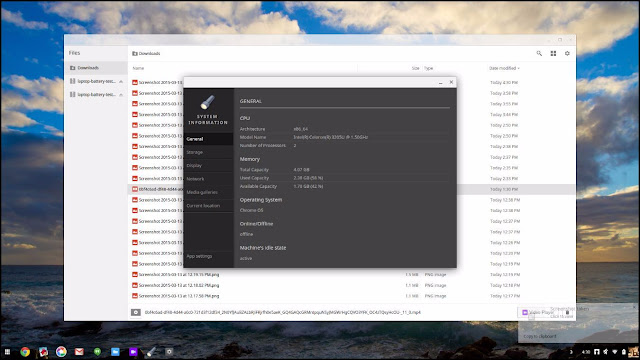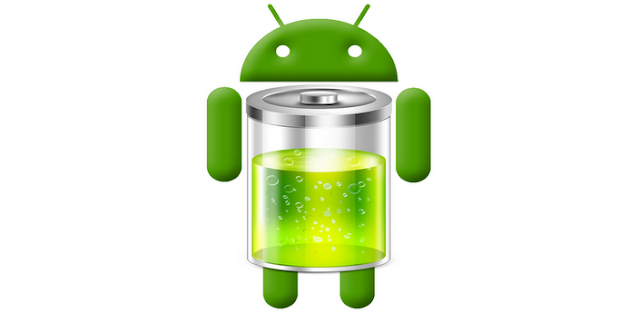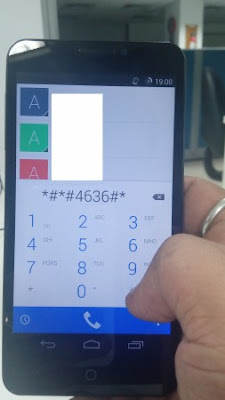Compact enough to carry with you, yet versatile enough to run demanding applications, a laptop is the best tool for doing serious work or play at home and on the road. While standalone tablets and smartphones are always popular, most people realize that everything from typing a research paper to crunching video to gaming works better on a laptop. So what type of laptop should you get?
There's a wide variety of sizes, features and prices, which makes choosing the right laptop a challenge. That's why you need to figure out what your needs are. To make the right call, just follow these steps.
1. Pick a Platform: Mac, Windows or Chrome OS?
This is not an easy question to answer, especially if you're not familiar with both Macs and PCs. But this quick overview of each platform’s strengths and weaknesses should help.
Most laptops come with one of three operating systems: Windows, Chrome OS or Mac OS X (for MacBooks only). Choosing the right one is a personal preference, but here's a quick summary of what each offers.
Windows 10
The most flexible operating system, Windows appears on many more makes and models than Chrome OS or Mac OS X. Windows notebooks range in price from under $200 to several thousand dollars and offer a wide array of features from touch screens to fingerprint readers to dual graphics chips. Windows 10, the latest version of Microsoft's flagship operating system, provides a number of improvements over Windows 7 and 8, including the ability to switch between tablet and desktop modes, a revamped Start menu with live tiles and the Cortana voice assistant. While it still needs more touch-friendly apps for tablet users, Windows has millions of desktop programs available, including the full versions of the major productivity, graphics, video and development software.
Apple OS X El Capitan
All MacBooks come with Apple's own operating system, Mac OS X El Capitan. Overall, the operating system offers similar functionality to Windows 10, but with a different take on the interface that substitutes an apps dock at the bottom of the screen for Microsoft's Start menu and taskbar. iPhone or iPad users will appreciate iOS-like features such as Launch Pad for your apps, superior multitouch gestures, and the ability to take calls and text from your iPhone. However, OS X isn't made for touch, because no MacBook comes with a touch screen.
Chrome OS
Found on inexpensive "Chromebooks" such as the Lenovo 100S Chromebook, Google's OS is simple and secure, but limited. The user interface looks a lot like Windows with an application menu, a desktop and the ability to drag windows around, but the main app you use is the Chrome browser. The downside is that there are few offline apps and those that exist don't always work well. However, if you need a device to surf the Web and check email, navigate social networks and chat online, Chromebooks are inexpensive and highly portable, and they offer good battery life.
2. Decide If You Want a 2-in-1
These days, many PC laptops fall into the category of "2-in-1s," devices that can switch between traditional clamshell mode, tablet mode and other positions in between such as tent or stand modes. The 2-in-1s generally come in two different styles: detachables with screens that come off the keyboard entirely and flexible laptops with hinges that bend back 360 degrees to change modes. Most of these systems are much better at serving one purpose than the other, with bend-backs being laptops first and detachables offering a superior tablet experience. However, if you don't see the need to use your notebook as a slate, you'll usually get more performance for your money and a better productivity experience with a traditional clamshell laptop.
3. Choose the Right Size
Before you look at specs or pricing, you need to figure out just how portable you need your laptop to be. Laptops are usually categorized by their display sizes:
- 11 to 12 inches: The thinnest and lightest systems around have 11- to 12-inch screens and typically weigh 2.5 to 3.5 pounds,
- 13 to 14 inches: Provides the best balance of portability and usability, particularly if you get a laptop that weighs under 4 pounds.
- 15 inches: The most popular size, 15-inch laptops usually weigh 4.5 to 6.5 pounds. Consider this size if you want a larger screen and you're not planning to carry your notebook around often.
- 17 to 18 inches: If your laptop stays on your desk all day every day, a 17- or 18-inch system could provide you with the kind of processing power you need to play high-end games or do workstation-level productivity.
4. Check That Keyboard and Touchpad
The most impressive specs in the world don't mean diddly if the laptop you're shopping for doesn't have good ergonomics. If you plan to do a lot of work on your computer, make sure the keyboard offers solid tactile feedback, plenty of vertical travel (distance the key goes down when pressed, usually 1 to 2mm) and enough space between the keys.
 Look for an accurate touchpad that doesn't give you a jumpy cursor and responds consistently to multitouch gestures such as pinch-to-zoom. If you're buying a business laptop, consider getting one with a pointing stick (aka nub) between the G and H keys so you can navigate around the desktop without lifting your fingers off the keyboard's home row.
Look for an accurate touchpad that doesn't give you a jumpy cursor and responds consistently to multitouch gestures such as pinch-to-zoom. If you're buying a business laptop, consider getting one with a pointing stick (aka nub) between the G and H keys so you can navigate around the desktop without lifting your fingers off the keyboard's home row.
5. Pick Your Specs
Notebook components such as processor, hard drive, RAM and graphics chip can confuse even notebook aficionados, so don't feel bad if spec sheets look like alphabet soup to you.
Here are the main components to keep an eye on.
- CPU: The "brains" of your computer, the processor has a huge influence on performance, but depending on what you want to do, even the least-expensive model may be good enough. Here's a rundown.
- AMD A series or Intel Core i3 / i5: If you're looking for a mainstream laptop with the best combination of price and performance, get a Core i5. Core i3 is a small step down. AMD A series CPUs are less common, but promise similar performance.
- Intel Core i7: High-end performance for gaming rigs and workstations.
- AMD E Series or Intel Pentium/Celeron: Found on low-cost laptops. It provides just enough performance to enable basic tasks such as video viewing, document editing and Web surfing.
- Intel Atom: Also found on low-cost laptops and 2-in-1s. It offers basic performance but more battery life than Celeron/Pentium.
- Intel Core m3 / m5 / m7: Low-power and low heat allow systems with these processors to go fanless. Performance is better than Celeron, but a notch below Core i3 / i5.
- RAM: Some sub-$250 laptops come with only 2GB of RAM, but ideally you want at least 4GB on even a budget system and 8GB if you can spend just a little more.
- Storage Drive (aka Hard Drive): Even more important than the speed of your CPU is the performance of your storage drive. If you can afford it and don't need a ton of internal storage, get a laptop with a solid state drive (SSD) rather than a hard drive, because you'll see at least three times the speed and a much faster laptop overall. Among SSDs, the newer PCIe x4 (aka NVME) units offer triple the speed of traditional SATA drives. Sub-$250 laptops use eMMC memory, which is technically solid-state but not faster than a mechanical hard drive.
- Display: The more pixels you have, the more content you can fit on-screen, and the sharper it will look. Most budget and mainstream laptops have 1366 x 768 displays, but if you can afford it, we recommend paying extra for a panel that runs at 1920 x 1080, also known as full HD or 1080p. (The difference is typically about $TK.) Some higher-end laptops have screens that are 2560 x 1600, 3200 x 1800 or even 3840 x 2160, which all look sharp but consume more power, lowering your battery life.
- Touch Screen: If you're buying a regular clamshell laptop, rather than a 2-in-1, you won't get much benefit from a touch screen and you will get 1 to 3 hours less battery life. On 2-in-1s, touch screens come standard.
- Graphics Chip: If you're not playing PC games, creating 3D objects or doing high-res video editing, an integrated graphics chip (one that shares system memory) will be fine. If you have any of the above needs, though, a discrete graphics processor from AMD or Nvidia is essential. As with CPUs, there are both high- and low-end graphics chips. Nvidia maintains a list of its graphics chips from low to high end, as does AMD.
- DVD/Blu-ray Drives. Few laptops come with optical drives, because all software and movies are downloadable. However, if you really need to read / write discs and your laptop of choice doesn't come with a built-in DVD drive, you can always buy an external one that connects via USB for under $20.
6. Don’t Skimp on Battery Life
 If you're buying large, bulky notebook that you'll use only on a desk near an outlet, you don't have to worry about battery life. However, if you plan to use the laptop on your lap, even if it's at home and or work, you'll want at least 6 hours of endurance, with 8+ hours being ideal. To determine a notebook's expected battery life, don't take the manufacturer's word for it. Instead, read third-party results from objective sources, such as our reviews.
If you're buying large, bulky notebook that you'll use only on a desk near an outlet, you don't have to worry about battery life. However, if you plan to use the laptop on your lap, even if it's at home and or work, you'll want at least 6 hours of endurance, with 8+ hours being ideal. To determine a notebook's expected battery life, don't take the manufacturer's word for it. Instead, read third-party results from objective sources, such as our reviews.
7. Plan Based on Your Budget
These days, you can buy a usable laptop for under $200, but if you can budget more, you'll get a system with better build quality, stronger performance and a better display. Here's what you can get for each price range.
- $150 to $250: The least-expensive noteboo
ks are either Chromebooks, which run Google's browser-centric OS, or low-end Windows systems with minimal storage and slower processors, such as the HP Stream 11 and the Lenovo Ideapad 100S. Use these as secondary computers only or give them to the kids. - $350 to $600: For well under $600, you can get a notebook with an Intel Core i5 or AMD A8 CPU, 4 to 8GB of RAM, and a 500GB hard drive, all respectable specs. However, at this price, most notebooks don't have an SSD, a full-HD display or long battery life.
- $600 to $900: As you get above $600, you'll start to see more premium designs, such as metal finishes. Manufacturers also start to add in other features as you climb the price ladder, including higher-resolution displays and entry-level SSDs.
- Above $900: At this price range, expect notebooks that are more portable, more powerful or both. Expect higher-resolution screens, faster processors and possibly discrete graphics. The lightest, longest-lasting ultraportables, like the MacBook Air 13-inch and the Dell XPS 13, tend to cost more than $1,000 (although you can get the Dell for less if you don't opt for a touch screen). High-end gaming systems and mobile workstations usually cost upward of $1,500 or even as much as $2,500 or $3,000.
8.Mind the Brand
Your laptop is only as good as the company that stands behind it. Accurate and timely technical support is paramount, which is why Laptop Mag evaluates every major brand in our annual Tech Support Showdown. This past year Apple came in first place, followed by HP and Samsung.This past year Apple came in first place, followed by Microsoft and Samsung.
Support is only part of what makes a notebook brand worth your money. You also have to consider how the manufacturer stacks up to the competition in terms of design, value and selection, review performance and other criteria. In our 2015 Best and Worst Laptop Brands report, Apple placed first, followed by Dell and HP.
Compact enough to carry with you, yet versatile enough to run demanding applications, a laptop is the best tool for doing serious work or play at home and on the road. While standalone tablets and smartphones are always popular, most people realize that everything from typing a research paper to crunching video to gaming works better on a laptop. So what type of laptop should you get? - See more at: http://www.laptopmag.com/articles/laptop-buying-guide#sthash.Kv7sYRXB.dpuf
Compact enough to carry with you, yet versatile enough to run demanding applications, a laptop is the best tool for doing serious work or play at home and on the road. While standalone tablets and smartphones are always popular, most people realize that everything from typing a research paper to crunching video to gaming works better on a laptop. So what type of laptop should you get? - See more at: http://www.laptopmag.com/articles/laptop-buying-guide#sthash.Kv7sYRXB.dpuf
Compact enough to carry with you, yet versatile enough to run demanding applications, a laptop is the best tool for doing serious work or play at home and on the road. While standalone tablets and smartphones are always popular, most people realize that everything from typing a research paper to crunching video to gaming works better on a laptop. So what type of laptop should you get? - See more at: http://www.laptopmag.com/articles/laptop-buying-guide#sthash.Kv7sYRXB.dpuf
